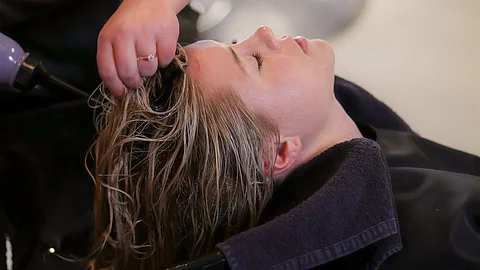Here are 5 case reports:
Case 1: A 79-year-old woman developed vertigo, nystagmus (rapid eye movements) and ataxia during shampooing. Her MRI was normal, but MRA (magnetic resonance angiography) showed a marked reduction in the blood flow to the right vertebral artery due to hyperextension. Her symptoms worsened briefly but resolved within 12 hours.
Case 2: An 84-year-old woman developed slurred speech, and weakness on the left side of her face, after her hairdressing session. She was found to have Wernicke’s aphasia (the loss of ability to speak and understand language due to the lesion or damage in the middle or left side of the brain potential cause may be impaired blood supply to the brain) and right Babinski sign. And CT scan revealed parietal infraction.
Case 3: A 76-year-old woman developed nausea, vomiting, ataxia, and vertigo after shampoo treatment. The MRI showed microvascular infarcts (lack of blood supply to the small blood vessels in the brain) and left cerebellar infraction (lack of blood supply to the cerebellum) which is linked to the symptoms above.
Case 4: An 80-year-old woman developed dizziness, ataxia, and numbness on the left side of her face after shampooing. She had been doing daily neck exercises and undergone lengthy dental procedures. MRI showed microvascular infractions and brain stem atrophy.
Case 5: A 54-year-old woman developed slurred speech, difficulty in swallowing, and right-hand incoordination after a long hairdressing session. And CT scan showed cerebellar infarction.
How Does it get triggered?


